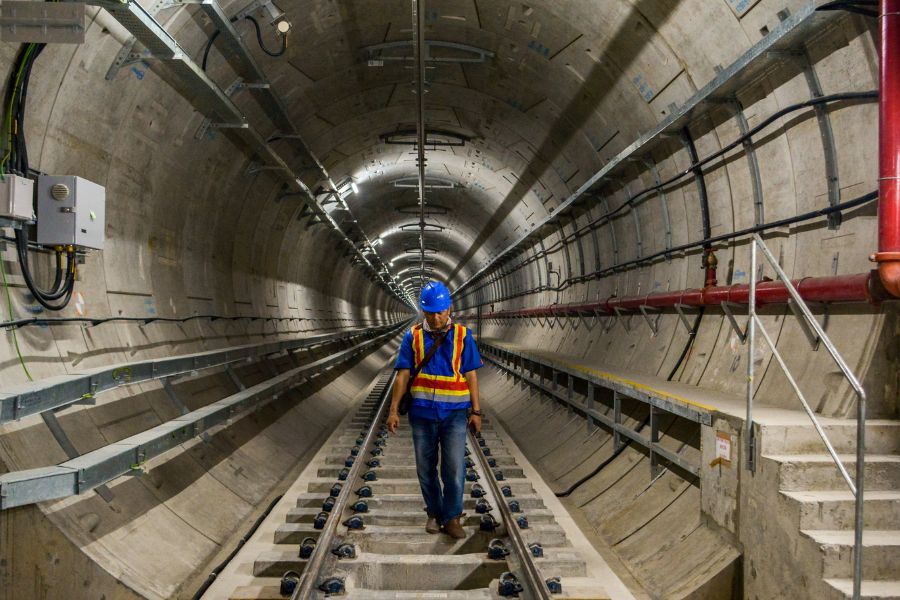Cathodic Protection for Underground Structures: Safeguarding Infrastructure from Corrosion
Cathodic protection for underground structures is a vital technique in preserving the integrity of buried infrastructure. This electrochemical method effectively combats corrosion, extending the lifespan of various underground assets. In this article, we’ll explore the principles, types, and applications of cathodic protection for underground structures.
Understanding Corrosion in Underground Environments
Corrosion poses a significant threat to underground structures, leading to material degradation, structural weakening, and potential failures. Underground environments are particularly prone to corrosion due to factors such as soil moisture, chemical composition, and bacterial activity. The consequences of unchecked corrosion can be severe, including leaks, contamination, and costly repairs or replacements.
Principles of Cathodic Protection
Cathodic protection for underground structures works by altering the electrochemical process that causes corrosion. By making the metal structure the cathode in an electrochemical cell, the corrosion reaction is suppressed. This is achieved by introducing an external anode that corrodes preferentially, protecting the structure of interest.
Types of Cathodic Protection Systems
There are two main types of cathodic protection systems for underground structures: galvanic (sacrificial anode) systems and impressed current systems.
Galvanic Systems
Galvanic systems rely on the natural potential difference between the structure and a more electrochemically active metal. These systems are often used for smaller structures or in areas with low soil resistivity. The sacrificial anodes, typically made of metals like magnesium, zinc, or aluminum, corrode over time, necessitating periodic replacement. Galvanic systems are simple to install and require minimal maintenance, making them cost-effective for many applications.
Impressed Current Systems
Impressed current cathodic protection systems, on the other hand, use an external power source to drive the protective current. These systems are more suitable for larger structures or in high-resistivity soils. They offer greater flexibility in controlling the level of protection and can protect structures over longer distances. However, they require a constant power supply and more complex monitoring.
Key Components and Implementation
Implementing effective cathodic protection for underground structures involves several key components. Anodes, whether sacrificial or inert (in impressed current systems), are the source of the protective current. Reference electrodes are used to measure the protection levels, ensuring the system is functioning correctly. In impressed current systems, a power source and control unit regulate the applied current.
The design and installation of cathodic protection for underground structures require careful consideration of factors such as soil resistivity, structure size and shape, and anticipated corrosion rates. Regular monitoring and maintenance are crucial to ensure ongoing protection. This typically involves periodic measurements of protection levels, inspection of anodes, and adjustment of impressed current systems as needed.
Applications Across Industries
Cathodic protection for underground structures finds applications across various industries. In the oil and gas sector, it’s essential to protect pipelines that transport hydrocarbons over long distances. Water and sewage systems benefit from cathodic protection to prevent leaks and maintain water quality. Underground storage tanks, particularly those containing hazardous materials, rely on this technique to prevent environmental contamination. Even reinforced concrete structures in aggressive environments can be protected using specialized cathodic protection systems.
Benefits of Cathodic Protection
The benefits of implementing cathodic protection for underground structures are numerous. By significantly extending the lifespan of infrastructure, it reduces the frequency of repairs and replacements, leading to substantial cost savings over time. Moreover, it helps prevent environmental damage that could result from structural failures, aligning with increasingly stringent regulatory requirements.
Future Trends
As technology advances, the field of cathodic protection for underground structures continues to evolve. Remote monitoring systems are improving the efficiency of maintenance operations. New, more durable anode materials are being developed to enhance system longevity. Additionally, there’s growing interest in integrating cathodic protection with other corrosion prevention methods for comprehensive asset protection.
FAQs: Frequently Asked Questions
What is cathodic protection for underground structures?
Cathodic protection is an electrochemical technique used to combat corrosion in underground structures. By making the metal structure the cathode in an electrochemical cell, the corrosion reaction is suppressed, thereby preserving the integrity and extending the lifespan of buried infrastructure
Why is corrosion a significant issue for underground structures?
Corrosion in underground environments can lead to material degradation, structural weakening, and potential failures due to factors like soil moisture, chemical composition, and bacterial activity. Unchecked corrosion can result in severe consequences such as leaks, contamination, and costly repairs or replacements.
How does cathodic protection work?
Cathodic protection works by altering the electrochemical process that causes corrosion. An external anode is introduced, which corrodes preferentially, protecting the metal structure by making it the cathode in an electrochemical cell.
What are the benefits of implementing cathodic protection?
Cathodic protection significantly extends the lifespan of infrastructure, reduces the frequency of repairs and replacements, leads to substantial cost savings over time, and helps prevent environmental damage resulting from structural failures.
Closing Insights
Image Reference: Freepik
Disclaimer: All trademarks, logos, and brand names are the property of their respective owners. All company, product, and service names used in this website are for identification purposes only. Use of these names, trademarks, and brands does not imply endorsement.

